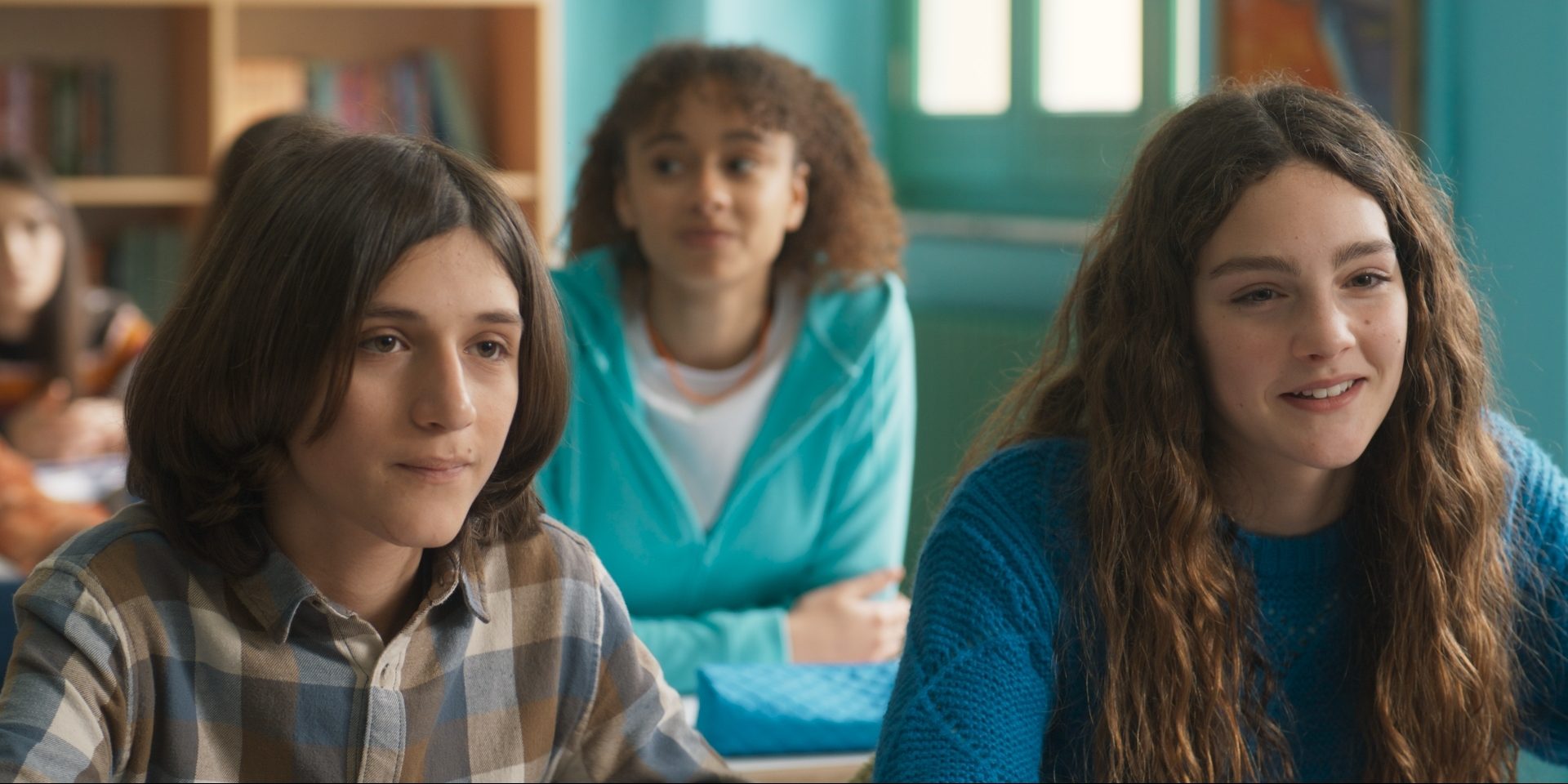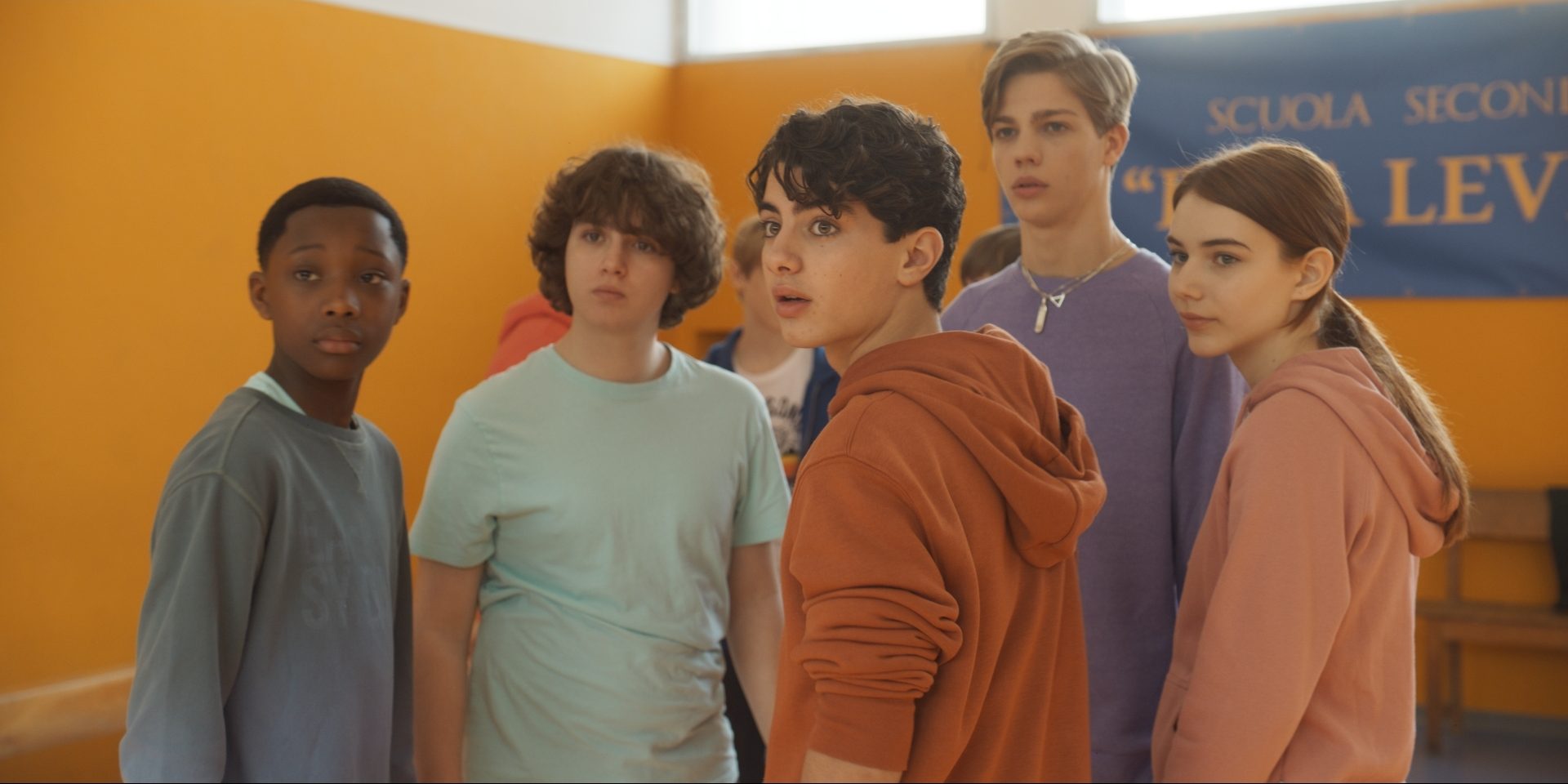Netflix’s ‘Riv4lries’ or ‘Riv4li’ explores the complex world of pre-adolescent middle school students in Pisa. Created by Simona Ercolani, the Italian drama series focuses on themes such as adult-youth dynamics, student ambitions, and teenage romance. A central theme is the social hierarchy within Montalcini Middle School, where students are divided into “insiders” and “outsiders” based on their constructed views of who belongs and who does not. This divide is amplified by the arrival of a new student, Terry, who creates a rivalry with the insiders. Despite their group loyalties, Terry and Claudio, an outsider and an insider respectively, develop a close emotional bond.
Ultimately, the series highlights the students’ efforts to overcome social barriers and foster unity, offering a poignant examination of friendship and the insecurities of youth. The most important place in the series, where the bulk of the story unfolds, is the Rita Levi Montalcini School in Pisa. The main characters experience love, life, and friendship within the walls of the school, which highlights its importance in the story. SPOILERS AHEAD.
Rita Levi Montalcini is a Fictional School Reflecting Real-Life Ideas
Despite being a fictional school that exists in the world of ‘Riv4lries,’ the Rita Levi Montalcini School is a place where students face real-life challenges. Though there is a similarly named school in reality, visual comparison suggests that it is not the same as the one in the narrative. Thus, the fictional school stems from the mind of the creator, Simona Ercolani, who also serves as the writer, along with Serena Cervoni, Mauro Uzzeo, Chiara Panedigrano, and others. The school becomes the battleground for football matches, student rivalries, group divisions, and love in the story, much like schools in the real world. The happenings within the school reflect real-life challenges faced by vulnerable teenagers.

One of the most important things that happens in the story is the “Wally” protest. Inspired by the protest art of Claudio and Terry, the students in the school take part in a protest to save their friends and also tear down the wall. The students at the school are burdened by strict rules and tough management that threaten them with consequences for their actions. The division enforced by the school management with the construction of the wall makes the students’ lives even more difficult. In reality, schools are extremely sensitive spaces, due to the fact that the sociopolitical viewpoints of teenagers are shaped through academic influences. The idea of enforced division between the middle school and high school students symbolizes how real schools may sometimes try to hinder the freedom of students by preventing them from interacting.
A 2025 report from The London School of Economics and Political Science suggests that students in the UK, specifically those belonging to working-class families, find their right to self-expression being curbed. The report also suggests that working-class English students were disproportionately affected by the intense emphasis on discipline and highly managed behavior policies in their schools. This contrasted sharply with the more liberal environments, fostering open debate and discussion, found in predominantly middle-class schools. The issues faced by the students at Rita Levi Montalcini reflect this reality, wherein students are discouraged from voicing their opinions, which ultimately leads to negative social outcomes.
The School Is Symbolically Connected to Real-Life Events and Individuals
Although a fictional school created for the story, the institution has a spiritual connection with real life. It is named after Rita Levi-Montalcini, an Italian neurobiologist, who also went on to be honored with a Nobel Prize in Physiology or Medicine jointly with colleague Stanley Cohen for the discovery of nerve growth factor (NGF) in 1986. She was a Jewish woman who had to flee to Florence from Turin during the Holocaust. The narrative pays a subtle tribute to the life of the woman, whose legacy is still celebrated. The issue of the “wall” in the narrative is an important one, and it presumably bears a symbolic reference to the Berlin Wall, which existed between East and West Germany during the height of the Cold War.

The idea of “tear down the wall” in the student protests in the show is a reference to the famous speech by Ronald Reagan, wherein he demanded that Mikhail Gorbachev tear down the Berlin Wall and unite the people of the two countries. Though the narrative focuses on issues faced by students and has no actual connection to the aforementioned historical events or individuals, it pays tribute to or makes symbolic references to them. In conclusion, it can be said that the school reflects reality through the experiences of its students.


